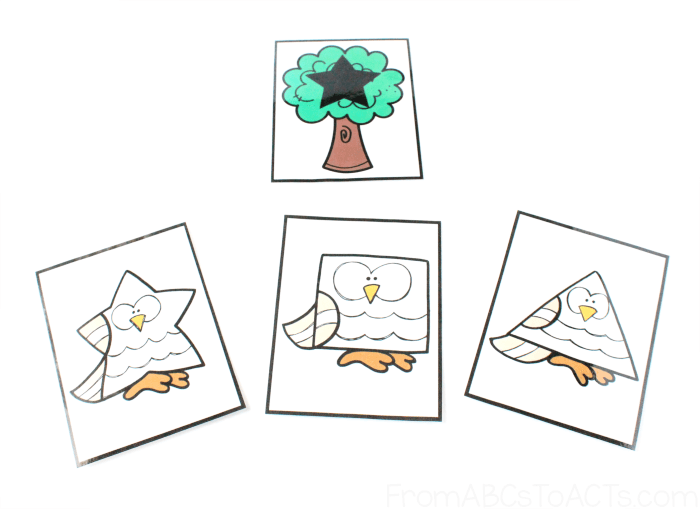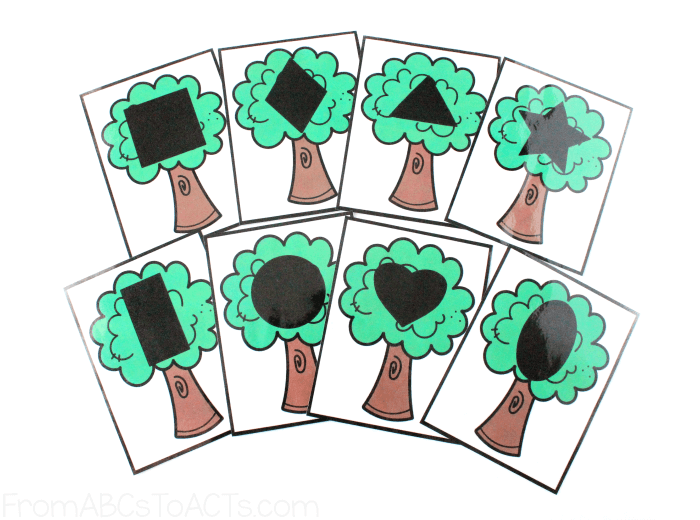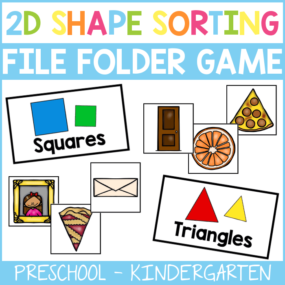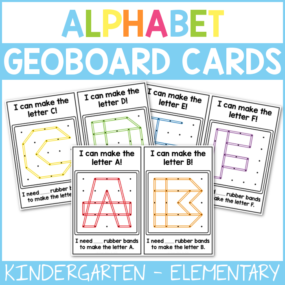This post may contain affiliate links. For more information, please see my full disclosure policy.
Right up there with ABC’s and 123’s, shapes are easily one of the first things that our little ones learn about. And just like the alphabet and numbers, it’s one of the key concepts that lay the foundation for much more complicated learning later on (think: geometry, art, science).
Now you all know how much I love making shape matching games, and we have them to match with just about any unit! From fruit to crayon box shapes, to apple shapes and even many Christmas themed shape matches, you can easily incorporate shapes in any unit, including your “Nocturnal Animals” unit (because you know how much I love the nightlife creatures!)

Snowy Owl Shape Matching
With eight shapes to practice with, this matching game is easy to prepare and even easier for your little learners to do independently. Simply print out this free printable and laminate to ensure longevity, then cut the cards out and let the learning begin!
Start by laying the tree cards out on the floor or table and then have your learner find the snow owl match to each tree. Don’t forget to prompt your preschooler to identify each shape by name, but also remember that incorporating math and language skills is easy peasy!

With this printable set, the shapes include:
- square
- diamond
- triangle
- star
- rectangle
- circle
- heart
- oval
Math and Shape Recognition
Yes, matching alone is a basic math skill that your kiddo will strengthen with every use of these shape cards, but there are so many other ways to incorporate math skills! Have your little one count the sides of each shape to strengthen their counting skills.
Are there some shapes that don’t have sides? How many don’t have sides? How many do?
Comparison is another great critical thinking skill that is important in math! What about the length of some sides? Using keywords like “long” and “short” can stimulate your child’s curiosity to explore the shapes more closely!

ELA and Shape Matching
Although we don’t typically associate ELA skills with shapes, there are plenty of ways to sneak in some phonemic awareness in too! As your student names each shape, prompt them to identify the beginning sound and letter of the shape. Too easy? See if they can identify the last sound and letter!
Take it a step further and encourage your learner to find letter shapes “hidden” in each shape. For example, turn the rectangle on its side and you have an uppercase L formed by two sides! Look for a secret V shape on the heart, or an A in the triangle. With just a little imagination (and maybe a dry erase marker!), your learner can explore the shapes to find hidden letters!


